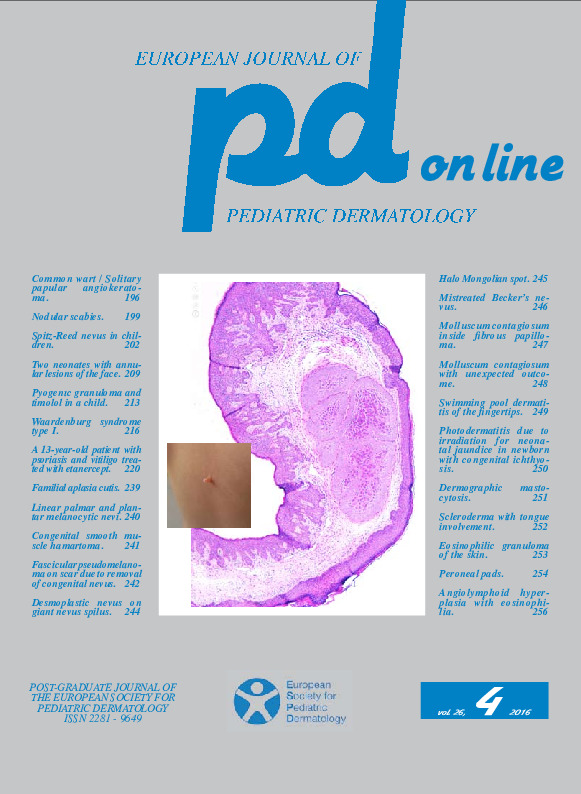Familial aplasia cutis with persistent ulceration.
Downloads
DOI:
https://doi.org/10.26326/2281-9649.26.4.1285How to Cite
Milano A. 2016. Familial aplasia cutis with persistent ulceration. Eur. J. Pediat. Dermatol. 26 (4): 239. 10.26326/2281-9649.26.4.1285.
pp. 239
Abstract
The present case confirmed that the inherited form of aplasia cutis is transmitted by an autosomal dominant trait; it also confirms that the familial form is associated with extended size, ulceration and hypertrophic scarring (2); in a review of the literature (1) of 26 families with inherited autosomal dominant aplasia cutis 19 showed the widely ulcerated form at birth. The actual case is especially characterized by the persistence for thirty months of ulceration, betrayed by the presence of a thick crust. Ulcerated aplasia cutis does not normally require treatment because it tends to spontaneously repair with scar, that in family forms may be hypertrophic. A plastic surgery may be necessary in very large ulcerations or in those ones that do not tend to spontaneously repair. However, the latter complication, as our case shows, can be due to trivial causes, such as the presence of exuberant granulation or erroneous topical treatment.Keywords
Aplasia cutis, Persistent ulcer

